The Chindits, the Marauders and the Air Commandos
in 1944
– Orders of Battle and Resources –

3rd INDIAN INFANTRY DIVISION
The Chindits were officially known as the “Special Force” or the 3rd Indian Infantry Division, but one should note that title “3rd Indian division” was purely a deceptive title to fool the Japanese. The bulk of the division contained Britons, West Africans, Gurkhas, Burmese and a few Indians in the engineering and service companies.
Virtually a double-strength division, the 3rd Indian had an unprecedented six brigades under its control– each referred to by a nickname. Each brigade had its own headquarters situated near an airfield with a headquarters column in the field.
(1) Major-Gen. Charles Orde Wingate (KIFA 24 March)
(2) Major-Gen. Walter D.A. Lentaigne (From 30 March)
Deputy CO
(1) Maj-Gen. G.W. Symes (Resigned, early April)
(2) Brigadier Derek Tulloch (Replaced Symes but being unpopular with both Symes and Lentaigne, was bypassed in the chain of command. Lentaigne instead preferred Col. Alexander)
Brigadier, General Staff CO (Rear HQ)
(1) Brigadier Derek Tulloch
(2) Col. Henry T. Alexander
GSO 1 (Ground), Chief Operations Officer
(1) Lt-Col. Francis Piggott (Sacked)
(2) Lt-Col. Henry T. Alexander
GSO 2 (Ground), Assistant Operations Officer — Major David Tyacke
GSO 1 (Air), Chief Operations Officer ?
GSO 2 (Air), Assistant Operations Officer — Major Frank Barns
GSO 3 (Air), Liaison Officer to Air Commandos — Capt. Paul Griffin (Jan 1944 to Mar 1945)
Chief Supply Officer — Brigadier Neville Marks
Signals Chief — Colonel Claude Fairweather
Headquarters:
Rear HQ — Gwalior, India
Main HQ — First at Imphal, then at Sylhet, Assam
Launching HQ — Lalaghat
Tactical-Forward HQ — Shaduzup, Burma
The 70th British Division: Of the four primary reasons for the regular army’s hatred of the Chindits, the 70th Division constituted possibly the third. A veteran of the 1942 fighting for Tobruk in North Africa, the division had begun the war as the 7th Division under 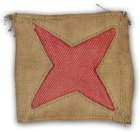 Maj-Gen. Richard O’ Conner. Initially held in British Palestine, the division was renumbered as the 6th Division on 3 November 1939 while in Egypt, and although its members expected to see action, none came and the division returned to Palestine. This nonchalant state of affairs continued until June 1940 when the unit returned to Egypt only to be disbanded and its men sent to other units as replacements.
Maj-Gen. Richard O’ Conner. Initially held in British Palestine, the division was renumbered as the 6th Division on 3 November 1939 while in Egypt, and although its members expected to see action, none came and the division returned to Palestine. This nonchalant state of affairs continued until June 1940 when the unit returned to Egypt only to be disbanded and its men sent to other units as replacements.
Reconstituted the next year, on 17 February 1941, the division seemed set to repeat the old pattern of rear-line deployment, but then on October 10, found itself re-designated the 70th Division and transferred to the legendary sea fortress of Tobruk between 13 and 20 October — primarily to relieve the heroic 9th Australian Division which had defended the seaport all that year. In November, the division fought its way out of the fortress and linked up with the rest of the British army, an act that officially broke the Axis siege of Tobruk. But by this act, the unit also passed from being a front-line unit and into a reserve division. In March 1942, it was transferred to far-off India to meet the Japanese threat.
Initially bivouacked at Bangalore in the south for a sustained period of rest, the division became the pride of the armies in India. It was the only fully-trained, completely-equipped British division in the theatre, and when orders came that it was to be broken up to augment the Chindit Force, it generated considerable resentment at General HQ India. It did not help that few of the senior army types trusted Wingate or his eccentric nature.
The other reasons for army anger included what was perceived as a Chindit “poaching” of good men and material for their unconventional, “highly-dubious” endeavor; a general suspicion of all special operations by the straight-laced Indian-British Army leadership (the list of detractors even included the popular General William “Uncle Bill” Slim), and resentment over Wingate’s favor with Churchill, Field Marshal Wavell and other leaders in England — all of which amounted to a fear that the Chindits would overshadow regular army operations against the Japanese in Burma.
It must be mentioned that Wingate also held a bias against the conservative Indian-British Army and Indian troops, whom he termed “second rate” — an unfair estimation considering the outstanding campaign conducted by these men in the recapture of Burma and elsewhere. Arguably, this was another source of friction for William Slim, the commander of the British 14th Indian Army, who took grave exception to Wingate’s opinions about the army.
Meantime, the 70th Division began to reorganize for the role of “long range penetration” on 6 September 1943, relinquishing its units to the 3rd Indian Division or “Special Force” (the Chindits) on October 25th. The divisional HQ ceased to function on that day and the division itself ceased to exist on November 24th.

Events leading to Operation “Thursday”
The first Chindit expedition, Operation “Longcloth” was considered an important breakthrough in strategic thinking. It proved that a war in the densely forested jungles of Burma could be fought and won – contrary to previous notions. In fact “Longcloth” proved so impressive that the Japanese who had long given up the idea of invading India, believing that the jungles beyond the Chindwin River were impassible, began to review to plan their own invasion of India. through those same jungles.
By the end of 1943, armies on both sides of the Chindwin (a defacto border separating the Allies from the Japanese) were content to hold what they had. In contrast, American strategy had taken the offensive – and they wanted to divert as much enemy troops as possible from the Pacific and at the same time, keep China (and her airbases) free to strike at the Japanese homeland. US commanders, notably General Joseph “Vinegar Joe” attempted to achieve this by training and attempting to organize the notoriously corrupt Chinese army for offensive operations. Meantime, they hoped for a campaign from the British who they believed held a large, untapped reserve of mainly Indian manpower.
At the “Quadrant”summit conference held in Quebec in August 1943, future allied military policy was the agenda. The British were under pressure to take offensive action in the Burma theatre. Churchill, with Wingate by his side, persuaded the allied chiefs to embark on a second, larger Chindit offensive. Wingate’s plans were ambitious. His proposal was to airlift several divisions behind Japanese lines. It was a bold plan but curtailed by political squabbles, reduced to include just a single division (albeit a highly-reinforced division) to take part in what would eventually become named as Operation “Thursday.”
At the core of Wingate’s plan was “to insert himself in the guts of the enemy” with the hopeful bonus that the Japanese would not know where they he had landed. This idea had two objectives:
A) Punch deep into enemy lines.
B) Stay there until relieved.
Wingate decided to retain the heart of the British system – using morale and motivation to the fullest – the espirit de corps of the regiment as the building block of his new force. To this end, he used men mainly from General Symes’ British 70th Infantry division, known for its high levels of training and morale, with a core of units staffed by veterans from the original 77th Brigade. But this time, instead of marching into Burma and harassing the Japanese with guerrilla-type raids, the Chindits were to land by glider in jungle clearings and build fortress, complete with artillery support and forward airstrips to bring in supplies and take out the wounded. It was a dramatic new tactic that would have deep consequences.
For a detailed history of the second campaign, click here
—————————————————————————————————————————-
As I go through more of my sources, the order of battle below with its list of commanders may one day be complete. In the meantime, if you have any information that could be of importance, kindly send me a message. Updated – 6 July 2016. (All dates indicated below are by day/month)
—————————————————————————————————————————-
 3rd West African “THUNDER” Brigade (Brig. A.H. Gillmore (sacked 18/4), Brig. Abdy H.G. Ricketts)
3rd West African “THUNDER” Brigade (Brig. A.H. Gillmore (sacked 18/4), Brig. Abdy H.G. Ricketts)
6th Bn, Nigeria Regiment (Lt-Col P.G. Day (sacked 17/3 after battalion suffered an ambush), replaced by Lt-Col. Gordon Upjohn)
—- 66 Column (Battalion CO)
—- 39 Column
7th Bn, Nigeria Regiment (Lt-Col. Charles Vaughn)
—- 29 Column (Maj. Charles Carfrae)
—- 35 Column (Battalion CO)
12th Bn, Nigeria Regiment (Lt-Col. Pat Hughes)
—- 12 Column
—- 43 Column
HQ, 7th West African Field Coy – 10 Column
3rd West African Field Ambulance
14th “JAVELIN” Brigade (Brigadier Thomas ‘Ian’ Brodie)
HQ Column – 59 Column
2nd Bn, Black Watch (Lt-Col George Green)
—- 42 Column (Maj. D.M.C. Rose)
—- 73 Column (Battalion CO)
1st Bn, Bedfordshire & Hertfordshire Regt (Lt-Col Pat Eason (ill in May of scrub typhus, died in hospital), repl by Lt-Col. T.J. Barrow)
—- 16 Column (Battalion CO)
—- 61 Column
2nd Bn, Yorkshire & Lancaster Regt (Lt-Col P. Graves-Morris, MC)
—- 65 Column (Maj. B.S. Downward)
—- 84 Column (Battalion CO)
7th Bn, Leicester Regiment (Lt-Col. F.R. Wilford)
—- 47 Column (Battalion CO)
—- 74 Column (Maj. J. Geoffrey Lockett)
54th Field Coy, RE
Medical Detachment
16th “ENTERPRISE” Brigade (Brigadier Bernard E. Fergusson, DSO)
HQ Column – 99 Column (Brigade Major: Maj. J.H. Marriot, MC)
Rear HQ (Lalaghat, India) – 2IC: Lt-Col. F.O. ‘Katie’ Cave
1st Bn, The Queen’s Royal (West Surrey) Regiment (Lt-Col J.F. Metcalf (evac in April), repl by T.V. Close)
—- 21 Column (Metcalf, Maj. Clowes)
—- 22 Column (Maj. T.V. Close → repl by Maj. G.F. Ottaway)
2nd Bn, Leicester Regiment (Lt-Col. Claude ‘Jack’ Wilkinson, DSO (WIA 26/3), Lt-Col H.N. Daniels)
—- 17 Column (Battalion CO, Maj. Dalgliesh, MC)
—- 71 Column (Maj. H.N. ‘Dafty’ Daniels)
51st/69th Royal Artillery (Lt-Col. R.C. Sutcliffe) (Composed of RA personnel)
—- 51 Column (Maj. A.C.S. Dickie)
—- 69 Columns (Battalion CO)
45th Recce Regt (Made from Recce units) (Lt-Col Cumberledge (evac 30/3), Lt-Col. G.H. Astell)
—- 45 Column (Maj. Ron Adams KIA 26/3, Battalion CO)
—- 54 Column (Maj. Varcoe (evac sick), Maj. E. Hennings (KIA))
2d Company, RE
Medical Detachment
23rd Long-Range Penetration Brigade Brigadier (Brigadier Lance ECM Perowne)
(Never joined the Chindits in the field. Was instead used to quell Japanese attackers in the Kohima area.)
HQ Column – 32 Column
1st Bn, Essex Regiment
—- 44 Column
—- 56 Column
2nd Bn, Duke of Wellington’s Regiment (Lt-Col. E.W. Stevens, MBE) → Bn fought in the Naga Hills
—- 33 Column (Maj. S.R. Hoyle, MC)
—- 76 Column (Battalion CO, Maj. A.D. ‘Tony’ Firth, DSO) → Known as “The Smugger’s Column”
4th Bn, Border Regiment
—- 34 Column
—- 55 Column
12th Field Company, RE
Medical Detachment
77th “EMPHASIS” Brigade (Brigadier J Michael Calvert)
HQ Column – 25 Column (Brigade Major: Maj. Francis Stuart)
Rear HQ (LZ Broadway) – Bde 2IC: Col. Claude Rome, DSO)
Mixed Field Coy, RE/Royal Indian Engineers
3rd Bn, 6th Gurkha Rifles (Lt-Col. H.A. ‘Boom’ Skone (evac), Lt-Col. Freddie Shaw)
—- 36 Column (Initially both columns commanded by Skone)
—- 63 Column (Maj. Freddie Shaw)
1st Bn, The King’s (Liverpool) Regt (Lt-Col W.P. ‘Scottie’ Scott) (To 111 Bde in May)
—- 81 Column (Battalion CO) → Floater Column at ‘Broadway’
—- 82 Column (Maj. Gaitley)
1st Bn, Lancashire Fusiliers (Lt-Col. Hugh N.F. Christie)
—- 20 Column (Maj. Shuttleworth, Maj. David Monteith, KIA 8/6)
—- 50 Column (Battalion CO)
1st Bn, South Staffords Regiment (Lt-Col. G.P. Richards, MC (WIA 22/3, died in May), Lt-Col. Ron Degg)
—- 38 Column (Battalion CO, Maj. W.A. Cole, MC)
—- 80 Column (Maj. Degg) → Both columns combined in mid-May and evac in July
3rd Bn, 9th Gurkha Rifles (Lt-Col. George Noel → repl. by Lt-Col. Alec Harper) (To 111 Bde in May)
—- 57 Column (Battalion CO)
—- 93 Column (Maj. R.E.G. ‘Reggie’ Twelvetrees)
142nd Commando Coy, Hong Kong Volunteers
Medical and Veterinary Detachments
111th “PROFOUND” Brigade (Brigadier William DA ‘Joe’ Lentaigne – after he was promoted up in March, the brigade was given to Brigadier J.R. ‘Jumbo’ Morris, who was unable to relinquish command of Morrisforce. Therefore, the brigade was commanded in the field by Major John Masters, appointed temporary brigadier, while Morris was its commander on paper)
HQ Column – 48 Column (Brigade Major: Maj. John Masters → repl by Maj. ‘Baron’ Henfry)
Rear HQ:
1st Bn, The Cameronians (Scottish Rifles) (Lt-Col. William M. ‘Bill’ Henning – to 15 Sept 144)
—- 26 Column (Temp Maj. B.J. ‘Tim/Breezy’ Brennan)
—- 90 Column (Battalion Commander)
2nd Bn, The King’s own Royal Regiment (Lt-Col. A.W. ‘Tommy’ Thompson)
—- 41 Column (Battalion Commander)
—- 46 Column (Maj. Heap)
3rd Bn, 4th Gurkha Rifles (Lt-Col. Ian Monteith)
(Adjutant – Major Bill Towill)
—- 30 Column (Maj. Maurice Deane)
—- 40 Column → Moved to Morris Force (See below)
Mixed Field Coy, RE/Royal Indian Engineers
Medical and Veterinary Detachments
Morris Force (Morrisforce) (Brigadier J.R. ‘Jumbo’ Morris)
4th Bn, 9th Gurkha Rifles (Maj. Morris (transferred), Maj. Russell)
—- 49 Column (Battalion CO)
—- 94 Column (Maj. Peter G. Cane) → Garrison at ‘Broadway’
3rd Bn, 4th Gurkha Rifles
—- 40 Column (Lt-Col. Ian Monteith, KIA)
† This force harassed Japanese forces in the mountain ridges skirting the Bhamo-Myitkyina Road.
DAH Force (Lt-Col. D.C. ‘Fish’ Herring)
This force consisted on 74 men, including Herring, his second-in-command, Captain Lazum Tang and ten Kachins of the 2nd Burma Rifles, Major Kennedy of the Poona Horse, Captain Nimmo of the Argyll & Sutherland Highlanders, a 19-strong detachment from the Royal Corps of Signals under Captain Treckman, nine Chinese of the Hong Kong volunteers, a 27-strong defense platoon from the South Stafford Regiment under Captain Railton, a demolitions expert, Sgt Cockling, an American liaison officer, Captain Sherman P. Joost and lastly, Private Williams, a medic who looked after the sick and the wounded.
BLADETL (Blain’s Detachment) Major ‘Bob’ Blain
Volunteer force of six officers and 60 men (primarily British and West Africans) used for diversion, sabotage and reconnaissance. The group landed in special gliders which were capable of being hoisted back into the air by C-47 Dakotas equipped with snatching gear.
With its West Africans dressed in American uniforms (ostensibly to fool the Japanese), the unit conducted reconnaissance in the Indaw area, before and after Fergusson’s 16th Brigade arrived.
Gliderborne Commando Engineers
Other Units
Royal Artillery
Supporting non-mobile units employed in defending the Chindit Jungle fortresses:
R, S and U Troops, 160th Field Regiment, Royal Artillery (All with 25-Pdr cannons)
W,X,Y, and Z Troops, 69th Light Anti Aircraft Regiment(40mm & 12.5mm Hispano cannons)
Divisional Troops
2d Bn, Burma Rifles – Lt-Col. P.C. Buchanan (One section assigned per column except for the 3rd West African Brigade)
219th Field Park Company, Royal Engineers
Detachment 2nd Burma Rifles
145th Brigade Company, RASC
61st Air Supply Company, RASC
2nd Indian Air Supply Company, RIASC

THE REGIMENTS
Source: Almost all of these badges were adapted from vintage Gallagher’s Cigarette cards, printed in the early part of the 20th Century. Digital versions can be found at the New York Public Library’s Online Collection.
—————————————————————————————————————————-
Supporting Units
5307th Composite Unit (Provisional), US Army (“Merrill’s Marauders”)
CO — (1) Brigadier-General Frank D. Merrill – 1 Jan to 19 May 1944 (heart attack)
———(2) Col. John E. McCammon – 19-22 May (sacked)
———(3) Brig-Gen. Haydon L. Boatner – 22 May to June 1944 (relieved)
———(4) Col. Charles “Chuck” Hunter – June to 3 Aug 1944 (sent home)
Deputy CO— (1) Col. Charles N. Hunter
—————–(2) Col. John E. McCammon
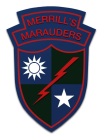 To offset its unglamorous army designation, the unit was unofficially known as Merrill’s Marauders, and joined General Stilwell’s Northern Command after training with Wingate as Chindits from late 1943 to early 1944. It was called “Galahad” by Wingate and the British. The unit possessed a rich diversity of Americans, with men from cities and the country, ranging from Anglo-Saxons to Latins, from Hispanics to Native Americans. Japanese Nisei staffed the intelligence and reconnaissance platoons in good numbers, and the unit’s best sniper was a Sioux Indian.
To offset its unglamorous army designation, the unit was unofficially known as Merrill’s Marauders, and joined General Stilwell’s Northern Command after training with Wingate as Chindits from late 1943 to early 1944. It was called “Galahad” by Wingate and the British. The unit possessed a rich diversity of Americans, with men from cities and the country, ranging from Anglo-Saxons to Latins, from Hispanics to Native Americans. Japanese Nisei staffed the intelligence and reconnaissance platoons in good numbers, and the unit’s best sniper was a Sioux Indian.
Wiped out once in combat, 2,600 fresh, non-Chindit trained replacements were flown in from the United States on May 25 to form a new “Galahad.” Soon, these men too were fighting for their lives at the Burmese town of Myitkyina under General Stilwell’s unbending orders. The survivors were so irate that Stilwell was once lucky to return from the frontline alive. The historian C. Ogburn records one of the Marauders telling an officer: “I had him in my rifle sights. I coulda squeezed one off and no one woulda known it wasn’t a Jap that got the son of a bitch.”
The unit was disbanded on 10 August 1944, a week after the fall of Myitkyina. Only 130 men had avoided becoming casualties out of the original 2,997.
H Force (Col. Charles N. Hunter)
≡ 1st Battalion – Red & White Combat Teams (Lt-Col. William Osborne)
≡ 150th Chinese Regiment
M Force (Lt-Col. George McGee Jr.)
≡ 2nd Battalion – Blue & Green Combat Teams (Lt-Col. George McGee Jr)
K Force (Col. Henry L. Kinnison Jr. (Died))
≡ 3rd Battalion – Khaki & Orange Combat Teams (Lt-Col. Charles Beach)
≡ 88th Chinese Regiment

1st Air Commando Group, United States Army Air Force
CO — (1) Col. Philip C. Cochran – Nov 1943 (officially from 29 Mar) to 20 May 1944
———(2) Col. Clinton B. “Clint” Gaty – 20 May 1944 to 26 Feb 1945 (MIA)
Deputy CO— Lt-Col. John R. Allison – November 1943 to 20 May 1944
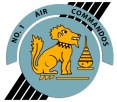 Formed under orders from U.S. Army Air Force chief, General “Hap” Marshall, this unit first came into existence as the top-secret Project 9 in 1943, specifically formed to support British long-range sorties into Burma. Later it became known as the 5318th Provisional Group in December 1943 and under this title, took part in Operation “Thursday” airlifting and supporting Wingate’s troops in Burma from March 1944. Yet, before the month was out, another change of title had occurred and the unit officially became known as the 1st Air Commando. Its motto, “Anyplace, Anytime, Anywhere” was lifted from a message sent by Wingate endorsing his support for the group and its men. Carried over in the decades after the war, this is currently the motto of U.S. Special Operations Command.
Formed under orders from U.S. Army Air Force chief, General “Hap” Marshall, this unit first came into existence as the top-secret Project 9 in 1943, specifically formed to support British long-range sorties into Burma. Later it became known as the 5318th Provisional Group in December 1943 and under this title, took part in Operation “Thursday” airlifting and supporting Wingate’s troops in Burma from March 1944. Yet, before the month was out, another change of title had occurred and the unit officially became known as the 1st Air Commando. Its motto, “Anyplace, Anytime, Anywhere” was lifted from a message sent by Wingate endorsing his support for the group and its men. Carried over in the decades after the war, this is currently the motto of U.S. Special Operations Command.
The 1st Air Commandos largely left the Chindits on 20 May 1944 and were disbanded on 3 November 1945. It was later reformed in the US on 18 April 1962 as the 1st Special Operations Wing.
13 x C-47 Dakota, 12 x C-46 Commando Transports (CO – Maj. William T. Cherry)
12 x B-25H Mitchell medium bombers (CO – Lt-Col. Robert T. Smith)
30 x P-51A Mustang Fighter-bombers (CO – Lt-Col. Gratten “Grant” Mahony)
100 x L-1 and L-5 “Grasshopper” Light planes (CO – Maj. A. Paul Rebori (Sacked), Lt-Col Clinton B. Gaty)
10th Jungle Air Rescue Detachment: 6 x Sikorsky YR-4 Helicopters (top-secret, early machines, also under Gaty’s command)
Glider Group (Capt. William H. Taylor Jr.) – Originally with 225 Waco CG-4A Gliders
After the September 1944 Reorganization, the Air Commando had this form:
5th & 6th Fighter Squadrons: P-47 Thunderbolts & P-51 Mustangs
164th Liaison Squadron: C-46 Commando
165th Liaison Squadron: C-46 Commando
166th Liaison Squadron: C-46 Commando
319th Troop Carrier Squadron: C-47 Dakotas
72nd, 309th & 326th Aerodrome Squadrons
284th & 285th Medical Dispensaries

Eastern Air Command
Supply Aircraft

900th Airborne Engineers Aviation Company, US Army
CO — (1) Captain Patrick Casey (KIA 5 March 1944)
Deputy CO— Lt. Robert Brackett
The 900th Airborne Engineers, with a strength of only 4 officers and 124 enlisted men, would carry out five, separate glider landing missions during the course of Operation “Thursday,” apparently earning them the privilege of having made the most glider-borne landings of any glider-borne unit of World War II. The 900th participated in the landings at all the Chindit strongholds: Broadway, White City, Aberdeen, Chowinghee and Blackpool.
—————————————————————————————————————————-
CHINDIT ORGANIZATION
The column was the main unit and all operations were column based (the term column was used literally because all personnel moved through the jungle in a single file). Each battalion had two columns, one commanded usually by the battalion commander and the other by his second in command. Each column had between 400-500 men.
Each column was composed of:
One company with four or five Rifle Platoons
One or two Heavy Weapons Platoons (each with two Vickers MMGs, two 3-Inch Mortars, one Flamethrower and two anti-tank Piats)
One Commando Platoon (with demolition and booby-trap experts)
One Recce Platoon (with a British officer commanding Burma Rifles-Karen and Kachin tribesman)
Plus assorted Royal Air Force controllers, sappers, signalmen and medical detachments.
—————————————————————————————————————————-
Acronyms & Abbreviations:
2IC – Second-in-Command
Bn – Battalion (In the British Army, basic combat unit capable of independent action)
CO – Commanding Officer
Coy – Company
DSO – Distinguished Service Order (Decoration)
Evac – Evacuated from Burma. Relieved of command.
KIA – Killed in action
KIFA – Killed in Flying Accident
MC – Military Cross (Decoration)
RA – Royal Artillery
RE – Royal Engineers
Regt – Regiment (In British Army, purely an administrative formation)
Repl – Replaced
RIASC – Royal Indian Army Service Corps
WIA – Wounded in Action
—————————————————————————————————————————-
Sources for all Chindit writing on this site:
ALLEN, Louis, Burma — The Longest War, London: Phoenix Press, 1984.
ANGLIM, Simon, Orde Wingate and the British Army, 1922-1944, London: Chatto & Pickering, 2010.
ASTOR, Gerald, The Jungle War, Wiley, 2004.
BAINES, Frank, Chindit Affair, Barnsley: Pen & Sword, 2011.
BIDWELL, Shelford, The Chindit War: Stilwell, Wingate and the Campaign in Burma: 1944, NY: Macmillan, 1979.
BIERMAN, John & Colin Smith, Fire in the Night: Wingate of Burma, Ethiopia and Zion, NY: Random House, 1999.
CALLAHAN, Raymond, Burma 1942-1945, London: Davis-Poynter, 1978.
CALVERT, Michael, Prisoners of Hope, London: Leo Cooper, 1971.
‘——————–‘ Fighting Mad, Norfolk: Jarrolds, 1964.
‘——————–‘ The Chindits, NY: Ballantine, 1971.
CHINNERY, Philip, Wingate’s Lost Brigade, Barnsley: Pen & Sword, 2010.
CLARKE, Peter, The Last Thousand Days of the British Empire, London: Penguin, 2007.
DIAMOND, Jon, Stilwell and the Chindits, Barnsley: Pen & Sword, 2014.
‘————‘ Chindit vs Japanese Infantryman, London: Osprey, 2015.
FERGUSSON, Bernard, Beyond the Chindwin, Barnsley: Pen & Sword, 2009.
‘—————‘ The Wild Green Earth, Barnsley: Pen & Sword, 2015.
KIRBY, S. Woodburn et al. , History of the Second World War: War Against Japan, London: HMSO, 1957
MARSTEN, Daniel P., Phoenix from the Ashes – The Indian Army in the Burma Campaign, NY: Praeger, 2003.
MASTERS, John, The Road Past Mandalay, London: Cassell, 2012.
McLYNN, Frank, The Burma Campaign: Disaster into Triumph, 1942-45, Yale University Press, 2011.
MOREMAN, Tim, Chindit 1942-45, Oxford: Osprey, 2009.
MORTIMER, Gavin, Three Daring Dozen: 12 Special Forces Legends of World War II, London: Osprey, 2012.
NESBIT, Roy Conyers, The Battle for Burma, London: Pen & Sword, 2009.
OGBURN, Charlton, The Marauders, 1960
OWEN, Frank, The Campaign in Burma, London: HMSO.
ROMANUS, Charles and Riley Sunderland, Stilwell’s Command Problems, 1953.
REDDING, Tony, The War in the Wilderness, The History Press, 2015.
ROONEY, David, Mad Mike — A Life of Brigadier Michael Calvert, London: Pen & Sword, 2007.
STIBBE, Philip, Return from Rangoon, London: Pen & Sword, 1997.
SYKES, Christopher, Orde Wingate, NY: World Publishing Company, 1959.
THOMAS, Andrew, Spitfire Aces of Burma and the Pacific, Oxford: Osprey, 2009.
THOMPSON, Julian, Forgotten Voices of Burma, London; Erbury Press, 2009.
THORBURN, Gordon, Jocks in the Jungle, Barnsley: Pen & Sword, 2012..
TOWILL, Bill, A Chindit’s Chronicle, iUniverse, 2000.
TUCHMAN, Barbara, Stilwell and the American Experience in China, NY: Grove Press, 2001.
WAGNER, R.D. Van, Any Place, Any Time, Any Where, Altgen, PA: Schiffer Publishing, 1998.
WEBSTER, Thomas, The Burma Road: The Epic Story of the China-Burma-India Theatre in World War II, NY: Harper Collins, 2004.
YOUNG, Edward, Air Commando Fighters of World War II, North Branch, MN: Specialty Press, 2000.
7th Leicestershire Regimental War Diary, The National Archives, WO 172/4900 (Unearthed by Hugh Vaugh)
Captain P. Griffin, IWM Museum of Records, PP/MCR/221 PG/1 ND (ca. 1970’s)
WEBSITES
1. Chindit Chasing, Operation Longcloth 1943 Website:
Interesting original research and a good collection of photographs collected by Steve Fogden pertaining to the 1943 expedition. Well worth a visit if you wish to know more of some of the men who participated in the 1943 campaign. Web address at: http://www.chinditslongcloth1943.com/index.html (Accessed 22 December 2011)
2. The Queen’s Royal West Surrey Regiment Good information on the Queen’s Regiment during the 1944 expedition. Look for Chapter 5. (Accessed 25 December 2011)
3. 2nd Yorks & Lancs War Diary, 1944 (Accessed 26 December 2011)
4. The British Military History Website: A good collection of information, orders of battle and other war research compiled by Robert Palmer, with an emphasis on the Burma campaign. (Accessed 4 January 2012)
5. The Chindits Society
The society was established in 2015 to connect the families of Chindits, researchers and historians with an interest in the Burma campaign. The aim of the society is to champion and project the history of the Chindits through “presentations and educational initiatives, assist families and other interested parties in seeking out the history of their Chindit relative or loved one, gather together and keep safe Chindit writings, memories and other materials for the benefit of future generations, ensure the continued well-being” of Chindit veterans and “promote fellowship between members.”
Web address at: http://thechinditsociety.org.uk/ (Accessed 2 April 2017)


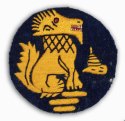


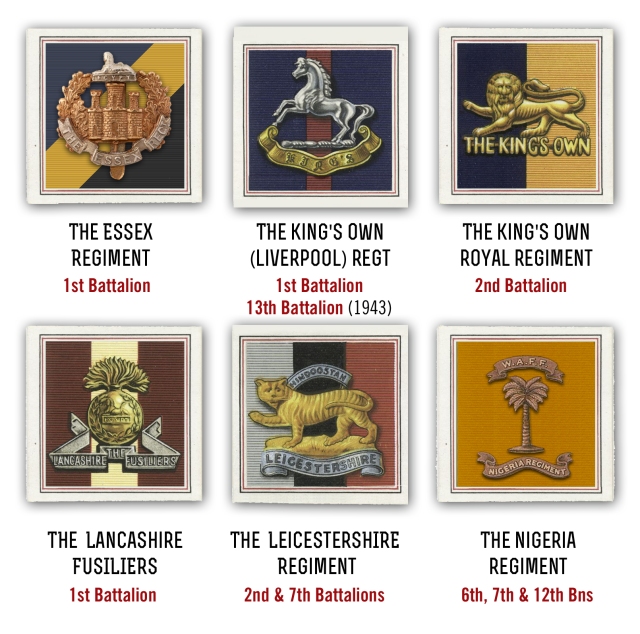
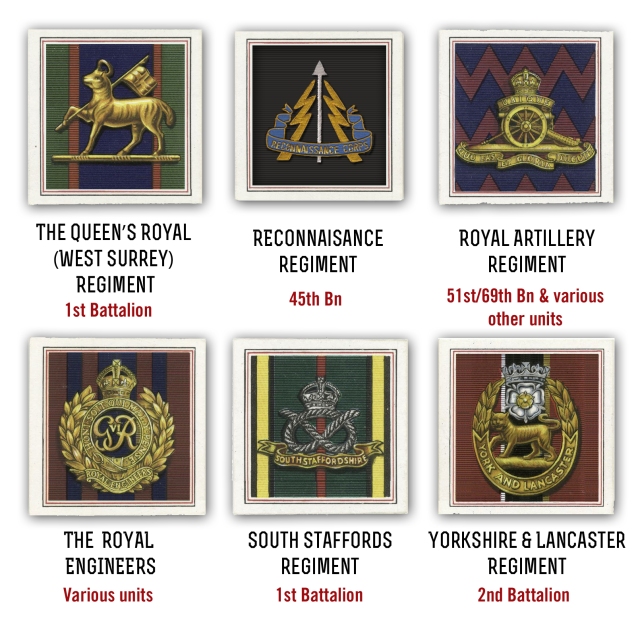

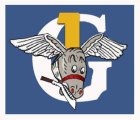


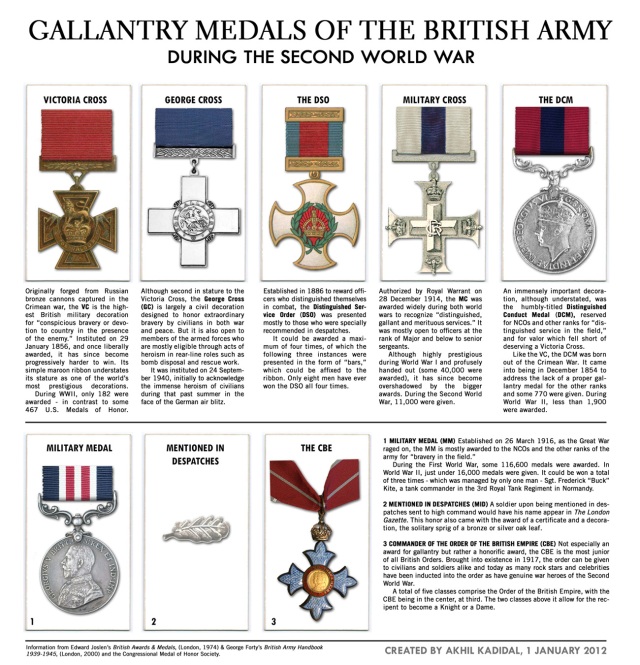
My father, Neville Priestley, commanded the 7th West African Field Company (81st Division, 3rd Brigade). I know he was wounded whilst clearing mines, and evacuated; but never asked the date. Is there any source from which I could ascertain this?
Sadly, there is a real paucity of information when it comes to the West Africans. I’ve certainly struggled to come across data. But a great place to start would be the National Archives. I am reasonably certain that you will find some information on your father there (considering that he was a serving British officer).
Also, this maybe a long shot, but you could examine some of the memoirs by Chindit officers who led West African units, including Major Carfrae.
Hi Akhil,
Have you come across the name William Austin in your research for the Chindits?
Regards.
Michael
My apologies, I’m in the midst of completing a book on another topic. I’m afraid I don’t have the opportunity to research further on the chindits for the next 3-4 months.
My Dad, Captain Dick Stuckey as he was then in 1944, I believe, a platoon commander with 12 Nigerian, 12 Column, part of the 3rd West African Thunder Brigade though by the end of the war he had reached the rank of Colonel (as shown on my birth certificate in 1946). Tony Redding’s excellent book ‘War in the Wilderness: The Chindits in Burma 1943-1944’ contains numerous references to Dad’s recollections. In 1999, Dad himself recorded an account of his wartime service which I think started in West Africa where he learned to speak Hausa and wrote a ‘how to’ manual for young officers, moving to India with Nigerian troops then on to Burma and back to India and the end of WW2 http://www.iwm.org.uk/collections/item/object/80017865. Sadly, Dad passed away on 17 August 2013, active and ‘still on my perch’ as he would say. He lies at rest in St Mary’s Church, Adderbury, Oxon. Over 200 people – locals, family, friends and old comrades – attended the funeral service conducted with full military honours, led by the local branch of The Royal British Legion.
Reading Akhil’s blog and other material, he mentions Major Macafrae who, as with so many others, was as familiar a name to me growing up in a military household (Dad a career soldier, Mum had been a Wren in wartime Ceylon where they were eventually reunited) as if they were old family friends.
Thanks for sharing all this information. I had somehow overlooked your father’s IWM recording and will definitely listen to it soon. Data on the West African contribution to the Chindits is often sparse. Every bit of primary source documentation helps.
Just read your blog. I am the daughter of Pat Hughes of the 12th Battalion of the Nigerian Regiment. I think your father knew mine during the Chindit Campaign. We know so little of his time there as he never spoke about it, but have been reading Tony Reddings book and trying too find out more. Do get in touch.
My Father was Lt later Capt AB Cameron seconded to 12 NR in 1943. He too learnt Hausa. I have some recollections of his, and a photograph of what I think must be the Officers of 12 NR, including Lt Col Hughes and Captain Stuckey.
I wish I had known of Colonel Stuckey before he passed away, as he might well have meet my father. My own father was not a regular soldier, having been in Nigeria as a prospector/big game hunter when war broke out. Holding a pilot’s licence he tried to enlist in the air-force, but was told he was too old at 30, so being a fluent Hausa speaker joined up with the WAFC. Like most of his generation he spoke relatively little of the war, but kept his M1 carbine which had 11 nothces and one cross on the butt. The latter, he said was because he and a colleague shot the same man so shared credit. A gentle man, he also used to joke that his study desk contained enemy ears – untrue, but clearly someone he knew had indulged in the practice… After being blown up on the minefield and shot through the foot before the stretchers could reach him he was flown out to the UK, then returned to Nigeria whwere he spent the tail end of the war harassing Vichy French forces over the Northern border (regarding which there seems almost no mention atall n the Web).
After demob he took up mining in Nigeria, employing his old sergeant and a corporal who featured large in my childhood. He died in 1984.
Sure it would have made Dad’s day to compare notes … he also wanted to join the RAF but couldnt tell the difference between yellow and red so failed the test. What these guys went through and, to a man, kept their silence leaving us to guess. I’m tryingto find out where mine was based – both Enugu an Maiduguri are names that come to mind – I’ve asked my brother now living in France but once in Nigeria if he knows. Both he and Dad learned to play polo out there.
Hello my granddad was in the 1st Battalion of the Essex Regiment. We think he was known as Doug(las) Gale. We wanted to know if he trained as part of the Long Range Penetration Group. He was in India according to his service book until 8/12/43. He came home at this point. We do not know if this was due to injury or illness or something else. What we cannot work out is whether the group were actually fighting the enemy in December or just training? Can anyone help please.
Hi. Found this fine site after recently reading “The Hundred Days of Lt. Machorton” Highly recommended.
Hi David, Thanks for bringing this book to our attention. I’m sorry to say, I had never heard of it before.
I have recently updated Major Bill Travers MBE Wikipedia page.. You may like to look at it (working progress)
My Great Uncle Willie Cousins was a Lance Sergeant with the Royal Engineers 54 Fld Coy and was KIA 13/06/44. He received A ‘Mention in Despatches’. Anyone know where the 54 Fld Coy operated and the likely location he was killed?
I was wondering if the Chindits kept their previous ranks within the British army or where they reduced once under Indian service?
That’s a very interesting question. In all my readings of the war in the far east, I have never heard of soldiers being reduced in rank upon transferring to the British Indian army.
What is possible, however, is that those with acting or temporary ranks reverting to their actual ranks upon transfer, or for a myriad other reasons, such as lack of an appropriate post in the unit into which they are transferred.
Can you kindly tell me what led you believe that this took place in the far east? It could be useful to follow-up more on this.
When my father Dick Stuckey (ex Chindits) served as a British officer in the British Army, it was normal on overseas service to be notched up a rank – eg ‘acting’ Major then reduced back to eg Captain on return to the UK. It would be taken into account for promotion. I understood this was a PR exercise on the part of the army the exact purpose of which I’m not sure – something to do with keeping British troops on a par with troops from other nations (without having pay for the privilege?)
Thanks for the additional information, Susana.
Yes, I can second that it was normal after the war for officers to be reduced from their temporary war ranking. My father, Hugh Christie of the Lancashire Fusiliers, was a temporary Lt-Colonel in Burma during the war, and after the war was reduced back to being a Major for a time.
From the excellent choice of written material, can anyone suggest a source that will tell me the story of 33 Column.
I have been researching the Chindit history of a Private Eddie Savage 2nd Batt. Duke of Wellington’s Regiment.
As a Private I do not expect to find him mentioned in any History, but I have read 76 Column (Wilcox) and would like to compare with 33 Column, and perhaps narrow down Eddie Savage’s possible location.
I am in the process of arranging his bush hat and Chindit Badge to go to the Chindit Museum in York, so all ‘provenance’ will add a bit of a story.
Thanks
I can help you with the above. I have all the names of the men of the 33rd.Also their locations.The complete story. Veronica.
I am most interested.. Private Edwin (Eddie) Savage. If he wasn’t in 33 he had to be in 76. Do you have the War Diaries of this unit? I would like to find out as much of his Chindit story as possible, start to finish.
Do you need anything more from me?
I can help you with 33rd col. I have a list of all the men who served.Also their whereabouts etc.
My Father, John (Jack) Arnold Walker of Dunnington, Yorkshire, No. 14369266, was a 1st Lancashire Fusilier in the Chindits, 77 battalion. Inserted by DC3 after the gliders proved a fuc up. He was a bren gunner. They were supposed to be supplied by air drops. Mostly they starved as the Burmese got there first. His Bren Gun kept seizing up as there was no gun oil supplied in the air drops. Many of the rifles rusted up too. They walked out after 3 months fighting. Only 1/4 of them lived. Left no wounded. Dad carried his best mate out. He went on to be an MP suffering from malaria. Passed away 04 Jan 2011 aged 86 in Australia.
Excellent details. Your father sounds like a tough hombre.
Grant, I have gone through the list of all 2nd Battalion The Dukes.Dated Feb 1942,personnel who proceeded to Burma. No name of Savage. However, several of the Dukes joined the very new Paratrooper Brigade.This was being formed in India 1941. They still kept their Regiment at that time. However, even though they qualified as Paratroopers they re-joined their original units around late 42.War diary states so. My Father being one such man. They then went on to be part of Lance Perowne’s 23rd Brigade. Dukes being 33rd/76th.Do you have an army number? D.O.B. Any names of his friends? Any little tiny tiny thing at all. Then we can look further. Veronica.
Veronica, Thanks for your hugely valued help.
As per Service record Ed Savage did not arrive in unit until November 1943, so could not have been part of Longcloth, but may have been in training for the second Chindit operation.
No reference to Edwin Savage is a bit of a worry, but I think the dates explain this.
From his official Service Record.
“5729846 Pte Edwin Thomas Savage Royal Army Ordnance Corps
Joined up 18/04/40 (I will jump ahead a bit)
Transferred to Sherwood Foresters and posted to 13 Battalion. 6/3/42
Trans. to Royal Armoured Corps, posted to 163 Regiment 30/7/42
Trans. to D.o.W Regiment 2 Battalion 20/11/43
Attached to 4th Battalion Border Regiment 8/2/45 ”
(then several short moves, which appear irrelevant, until demob 18/9/46)
This covers 14 months in DoW in the period of interest.
His DoB was 17 Feb 1920.
I understand that the Sherwood Foresters were training Chindits in India.
I will hold my breath. Thanks Grant Symons
Hi, Grant, On the 6th of Nov 43, 229 men of the Sherwood Foresters joined the Dukes to make up strength. Dukes then began training watermanship , Practice of river crossing, mules swimming with equipment. Battle drill.Navigation of stars.90 mile marches with 60 LB packs and more. This took place around the river Ken.On the 23rd Nov 43 the man himself, Wingate, paid them a visit. 23rd Bde,Long Range Penetration [4th Border regt,] 1st Essex regt, 2nd Duke of Wellington’s regt. And 60th Royal Artillery were at the end of March moving up the railway from India to the air base at Silchar, to join the other Chindit forces already there. IIt was decided this force should not be flown into central Burma and placed under the orders of xxx111 Corps,Lieut-General Stopford. So they left Sylet by rail to Mariani and the Brigade was given the task of severing the lines of communication of three Jap columns.[Still as operating Chindits] The battalions of the Brigade were each divided into two columns,Dukes into 33rdand 76th. Border Regt formed 32nd and 34th. Essex Regt 44th and 56th. 60th Royal Artillary 60th and 88th. To give you an idea, 33rd column was comprised of some 400 officers and men, 70 mules. 12 chargers and 12 bullocks. So their story begins. However, are you able Grant to let me have your email? Their story being to long and to large to type up here. Veronica
You are a wonder. You have struck gold.
gasymons.ga@gmail.com
Hi Veronica
Not sure you ill see this but i am trying to trace which column my father was in as part of 23 Brigade His name i Harry Robinson Royal Signals and he was flown in to one of the columns as a replacement signaller and , because he was not trained a s a Chindit, his knees swelled up and he was left behind but managed to get back to the column after 5 days !! – any info appreciated
Mark Robinson
Hi, what a fantastic site and wealth of information you have! I appreciate this might be a bit of a long shot, but I’m trying to trace the war history of my grandfather, Capt. Anthony (Tony) Huish, 214324. I have his medals and some of his military memorabilia, including his membership card for the Chindits Old Comrades Assoc. I believe he was with the Leicestershire Regt. during the second Chindit operation, but I’m unsure whether he was 7th or 2nd Battalion (and I understand 2nd Battalion was disbanded at some stage). I’m fairly sure he crossed the Chindwin on foot during Op Thursday and not by glider, which may narrow it down, but that is also only family hearsay, so may not be correct! Any information you may have stumbled across regarding him would be gratefully received.
Hello Al,
I’m sorry to say that I have not come across the name “Huish” before. That does not mean, however, that no one else has either. A visitor to this site could possibly help.
As for the Leics battalions, I cannot remember the particulars of their history off-hand. I’ll have to go back to my sources and take another look. I’ll post any information I find. It may take me sometime, however, as I am in the thick of research for a book on Malta and art projects.
What I can remember off the bat, however, is that the 2d Leics were part of Fergusson’s 16th Brigade and the brigade travelled into Burma on foot – and crossed the Chindwin on foot. I don’t recall that the 2d Bn was disbanded…
Further information can be had by reading Fergusson’s “The Wild Green Earth,” and by contacting the Leicestershire Regimental Association via their website: http://www.royalleicestershireregiment.org.uk/
Akhil, many thanks for your swift reply.
I thought it might be a long shot that you’d have seen the name, but the information on the Leics Regt Assoc is very useful, as is the steer for the book, so thanks for that. From what you’ve said it does sound like he was 2nd Bn, and I do recall the mention of Fergusson at some point, so it seems likely he was 16 Bde, which is very useful to know for further research.
If you do happen across any reference to him I’d love to hear about anything you find, but I understand your busy, so don’t worry if not.
Again, many thanks. Al
14=05=2016,re the programme,bbc2, the story of Joe Simmons, tracing his fathers footsteps as a the Chindits,one cannot image the HORROR these chaps went thro,no, wonder they called it the FORGOTEN ARMY, I look fwd. to the second programme nxt week.
A H Butler
My late grandad Herbert Hunt was a trooper in 45 Reconnaissance Regt and I’m keen to learn more about his experiences in Burma (he never really talked about it). Does anyone know where I might start or of any books covering 45 Recce?
45th Reconnaissance Corps. Book, The Chindit War,Shelford Bidwell.
Useful info. Lucky me I discovered your site by accident, and I am stunned why this twist of fate didn’t came about in advance! I bookmarked it.
Ha. Glad to hear it!
Hi, I have been trying to trace anyone who can remember my Uncle Ken. Private Kenneth Edmund Buck, married till he got home.
He was at sea on his way to India for Burma June 1942.Have found His sister children but can’t get much information. I want to get as much infortmation as possible to put in my family genealogy. “So that he will not be forgotten”. His wife my Mums sister Took off a few days before his return to the Pier Head Liverpool. My mum had a letter from his wife saying she wouldn’t be found. Can remember his radio message one Sunday morning. There were about 50 in our house. the broadcast was a bit crackly, but his voice was clear. A lady got it all down in Shotrthand.Uncle Ken married again in 1959 Velma Dolores Woodhouse nee Squires. They had a little boy named Francesco Buck. Had some emails but not right in some way. Uncle Ken died in Hendon 1977 and Velma in 1979. U/Kens dad died in WW1 Cheshire regiment Hope you can help even the tiniest bit of information would be appreciated. I am getting to close to my “best used by date” Thank You for bearing with me.
Best Regards Yours very sincerely Ken Berry
Dear Mr. Berry, Very striking story. I admire your efforts to get more information. If you have your uncle’s service number, you can contact the National Archives in London. They will find his army service file – for a small fee. I urge you to do so. This is an important document to have.
In the interim, I hope your message here will prompt someone with additional information to come forward.
Hi,
This site is an Aladdin’s Cave for those researching their reticent fathers’ doings in the Burma jungle. Something that I would love to learn about is the untold (so far) deeds of the three RAF Airborne Commandos, or RAF Servicing Parties, who also operated behind enemy lines in Burma “with the Chindits”.
My uncle, Sgt Tom Ford of 134 Squadron became an airborne commando for Operation Thursday, very late ’43/early ’44 and we have the RAF form acknowledging the return of his Bren and ammunition dated 1945. He was a LAC on Hurricanes and Spitfires, had both normal and tropical wireless operator badges as well as his parachute wings. but what was his function? I get the impression that the RAF Servicing Parties were thrown together at the last minute, using RAF aircrew and ground crew with the right badges – or did they train at somewhere like Saugor?
Does anyone have any source of information on these Servicing Parties in India/Burma and how they were formed, under whom did they operate?
It’s anecdotal stuff that brings our parents’ war to life and it’s the very stuff they refused to give us! My uncle ground his teeth in his sleep for the rest of his life after he came back from Burma. Whatever did he experience there?
Flick Baker
Aladdin’s cave. I like that! Thanks for your detailed and interesting comment. Here’s hoping that additional information is forthcoming. I’ll post an addendum if something turns up in the course of my own research.